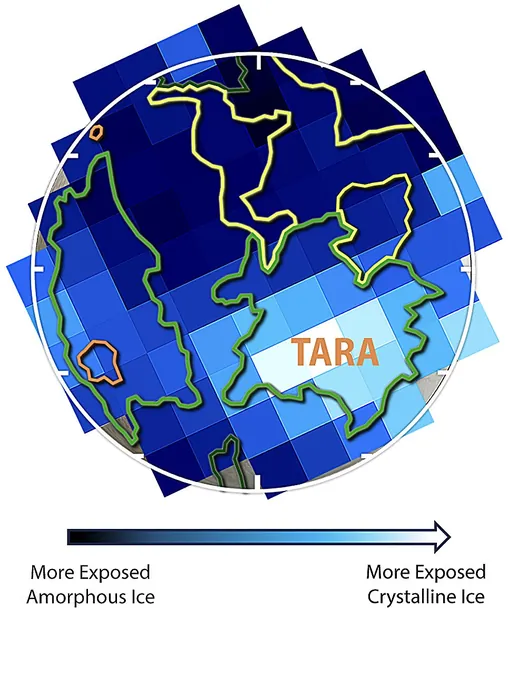
Revolutionary Discoveries: Europa's Ice Surface Is Constantly Transforming!
2025-05-28
Author: John Tan
Are We Witnessing a Dynamic World on Europa?
Get ready to rethink everything you know about Jupiter's enigmatic moon, Europa! Recent experiments spearheaded by Dr. Ujjwal Raut at the Southwest Research Institute reveal that the icy surface of this celestial body is in a state of constant metamorphosis. Thanks to data from the cutting-edge James Webb Space Telescope (JWST), scientists have uncovered compelling evidence that Europa's ice is not just a static shell!
A Tale of Two Ices: Crystalline vs. Amorphous
Water ice can be classified into two primary forms based on its structure. On our planet, crystalline ice manifests in a beautiful hexagonal pattern during freezing. However, things are starkly different on Europa! Here, the ice is continuously bombarded by charged particles, causing the crystalline structures to disintegrate into amorphous ice.
Groundbreaking Findings Unveiled!
Dr. Raut and his team meticulously conducted laboratory experiments to unveil the intricacies of Europa's icy façade, with their findings published in The Planetary Science Journal. Their work is pivotal in determining how quickly ice can transform from one state to another, especially in regions marked by geological turmoil known as chaos terrains.
The Excitement Builds with New Discoveries!
The emerging data, particularly from the JWST, bolsters the tantalizing hypothesis that beneath Europa's icy exterior lies a vast liquid ocean. Contrary to previous beliefs that only a thin layer of amorphous ice cloaked a crystalline base, this new study has unveiled layers of crystalline ice on the surface and depths of certain areas, particularly Tara Regio.
The Strangeness of Chaos Regions!
Dr. Richard Cartwright, co-author of the study, emphasized the unusual chemistry present in these chaotic areas. Remarkably, they found strong evidence of sodium chloride—yes, table salt—likely being sourced from Europa's interior ocean. But that’s not all! There are also signs of CO2 and hydrogen peroxide—elements that suggest a wild and intricate chemical landscape.
What's Beneath the Surface?
Raut has indicated that the data imply the presence of an expansive subsurface ocean almost 20 miles (30 kilometers) beneath Europa’s thick icy shell. This region, punctuated by fractured surfaces, hints at geologic processes that may be pushing materials from below. As researchers delve deeper into this fascinating moon, they are gathering more proof of a liquid ocean hidden beneath the icy crust.
The Elemental Puzzle Continues!
Among the intriguing finds, CO2 includes both the common carbon isotope (atomic mass of 12) and its rarer form (atomic mass of 13). These discoveries not only heighten the intrigue surrounding Europa but also pave the way for a new understanding of potential life-supporting conditions in the outer solar system.
As we unravel the mysteries of Europa, each revelation brings us closer to understanding the possibilities of life beyond Earth. Buckle up, space enthusiasts—this is only the beginning of a thrilling journey!



 Brasil (PT)
Brasil (PT)
 Canada (EN)
Canada (EN)
 Chile (ES)
Chile (ES)
 Česko (CS)
Česko (CS)
 대한민국 (KO)
대한민국 (KO)
 España (ES)
España (ES)
 France (FR)
France (FR)
 Hong Kong (EN)
Hong Kong (EN)
 Italia (IT)
Italia (IT)
 日本 (JA)
日本 (JA)
 Magyarország (HU)
Magyarország (HU)
 Norge (NO)
Norge (NO)
 Polska (PL)
Polska (PL)
 Schweiz (DE)
Schweiz (DE)
 Singapore (EN)
Singapore (EN)
 Sverige (SV)
Sverige (SV)
 Suomi (FI)
Suomi (FI)
 Türkiye (TR)
Türkiye (TR)
 الإمارات العربية المتحدة (AR)
الإمارات العربية المتحدة (AR)